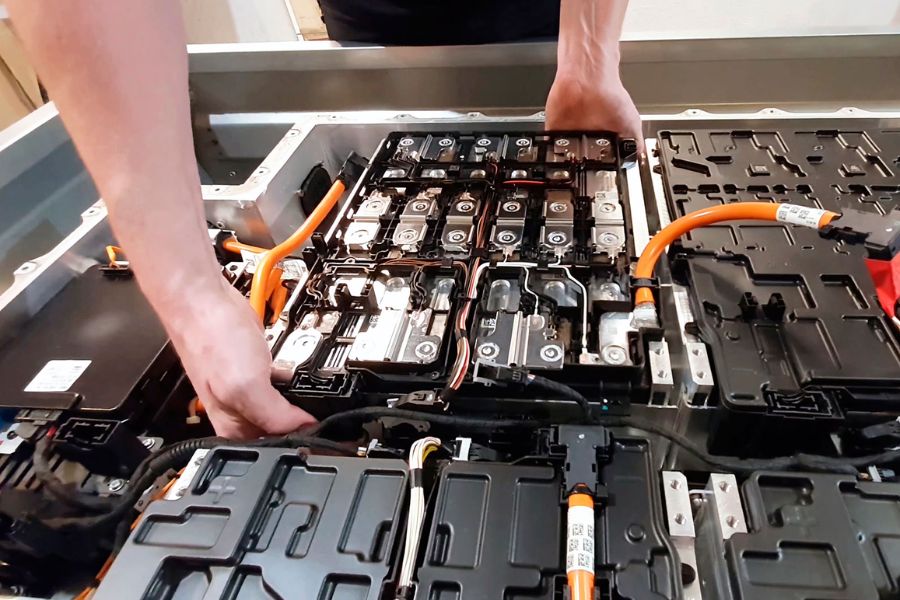The reuse of electric vehicle batteries represents a crucial business opportunity for various industry stakeholders.
Recognising the potential value of these components in other contexts opens the door to new revenue sources, while also ensuring a sustainable supply of raw materials and promoting the continued adoption of electric vehicles (EVs).
This raises the question: What could be the possible uses for a reused EV battery?
Nhiura Coaquira R., an expert in electromobility, has conducted research titled “The Path Towards Sustainable and Affordable Electric Vehicle Adoption.”
In this study, she identified three main options for utilising used EV batteries and highlighted the need to create a specific ecosystem to address this issue.
Firstly, the option of reusing electric vehicle batteries in smaller models with lower energy demand is outlined, as they have shorter range and lighter weight.
Direct reuse requires minimal modifications and is a straightforward first step in giving batteries a second life.
“For example, the new German-Indian company Nunam is reusing Audi e-tron batteries to power 3W auto-rickshaws in India,” confirms Nhiura Coaquira.
Another reuse option for these components is on-site storage or microgrid solutions.
In this approach, batteries can be aggregated to create storage at a specific site, either on a utility scale or to power buildings with intermittent renewable energy, such as solar.
These solutions can provide resilience to the community, improve access to energy, and help electric companies reduce electricity costs.
Lastly, electric vehicle batteries can help speed up and reduce the cost of charging.
These components can provide an additional power boost to low-voltage chargers, allowing for faster charging.
Moreover, during periods of high demand, batteries can supply power to chargers, helping to keep charging costs low for consumers.
An example of this solution is mentioned in Nhiura’s study: Electrify America, which has partnered with Volkswagen to reuse batteries from their used vehicles in charging stations.
Despite being perceived as a significant business opportunity in the EV market, it is important to note that Latin America lacks clear policies or laws regulating the composition, standards, or recycling of batteries.
Most electric vehicle manufacturers use proprietary Battery Management Systems (BMS) to which third parties cannot access to determine the battery’s state and technical information.
As a result, they must rely on expensive tests, often conducted by external laboratories, to determine the chemical composition and electrical properties before they can reuse or recycle it.
Batteries Ecosystem for Electric Vehicles
To reimagine the lifecycle of electric vehicle batteries, it is essential to establish an ecosystem for their second life.
In the absence of regulations, Coaquira suggests convening stakeholders from battery producers and local and federal governments to establish standards for battery pack designs and recycling practices.
“It is essential to demand that BMS systems be accessible to third parties, as many major original equipment manufacturers, such as BYD and Tesla, currently keep these systems locked away,” expresses the author.
She adds, “To fully capitalise on this innovative opportunity, we need to provide better access to startups and the R&D community, who are better positioned to help maximise the economic and environmental value of these new commodities.”
Similarly, it is crucial to establish a chain of responsibility that applies from the battery’s creation to determine who is responsible for its management and disposal throughout its lifecycle.
Incorporating innovators from the energy supply, EVs, and other related industries can help uncover valuable new uses for these batteries.
In line with this, seizing market opportunities provided by batteries involves considering business models like “Battery as a Service” (BaaS), which decouples the vehicle from battery ownership.
In this model, third parties can assume the initial costs and recoup them over time by leasing the batteries to consumers, public transportation systems, fleet owners, and smart grid solutions.
It is worth noting that, for the end consumer, this option can reduce the initial costs of electric vehicles, encouraging the adoption of sustainable transportation methods.
To learn more about electromobility in Latin America, visit the Mobility Portal Latinoamérica.







